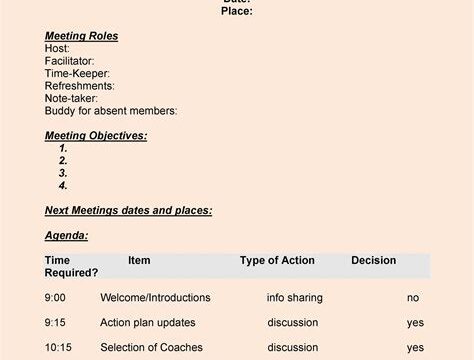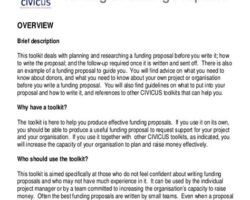Learn how to effectively plan, design, and deliver engaging presentations while incorporating audience participation and evaluating for optimal results.
Understanding the Purpose
When it comes to creating a structured and effective workshop agenda, it is crucial to start by understanding the purpose of the workshop. This involves clearly defining the goals and objectives of the workshop, and determining what the desired outcomes are. By having a clear understanding of the purpose, it becomes easier to stay focused and on track throughout the workshop.
Additionally, understanding the purpose of the workshop also involves identifying the target audience and their specific needs and interests. This will help in tailoring the content and activities to ensure that they are relevant and engaging for the participants. Whether the workshop is for employee training, team building, or knowledge sharing, having a clear understanding of the purpose is essential for creating a successful agenda.
Moreover, understanding the purpose of the workshop also means considering any potential challenges or obstacles that may arise, and planning for how to address them. This proactive approach can help in creating a more effective and efficient agenda, and in ensuring that the workshop runs smoothly without any major disruptions.
Identifying Key Topics
Workshop Agenda Template: Creating a Structured and Effective Schedule
When creating a workshop agenda, it is crucial to identify key topics that align with the overall purpose of the workshop. These topics should be relevant to the goals and objectives of the workshop, and should provide the necessary information and skills that the participants need to acquire.
One way to identify key topics is to conduct a needs assessment or survey among the potential participants. This will help in understanding the specific areas of interest or concern that the participants have, and will guide in selecting the most important and relevant topics for the agenda.
Furthermore, it is important to consider the level of knowledge and expertise of the participants when identifying key topics. This will ensure that the agenda is tailored to the needs of the audience, and that the content is neither too basic nor too advanced for their understanding.
Setting Clear Objectives
When creating a workshop agenda, it is crucial to set clear objectives in order to keep the event focused and on track. By establishing specific goals for the workshop, you can ensure that both the organizers and participants understand what needs to be achieved by the end of the session. This helps to provide clarity and direction, making it easier to plan the content and activities that will be included in the agenda.
In addition, setting clear objectives allows for better evaluation of the workshop’s success. By clearly defining what is to be accomplished, it becomes easier to measure whether the event met its intended purpose. This information can then be used to make adjustments for future workshops, improving the overall effectiveness of the agenda.
Furthermore, setting clear objectives helps to keep participants engaged and focused throughout the workshop. When attendees have a clear understanding of what is expected of them, they are more likely to actively participate and contribute to the discussions and activities. This ultimately leads to a more productive and successful event.
Allocating Time Wisely
When creating a workshop agenda, it’s crucial to allocate time wisely in order to keep the schedule on track and ensure that all important topics are covered. One way to do this is to prioritize the most crucial topics and allocate more time to them, while also allowing some flexibility for unexpected developments or discussions. This can help prevent the workshop from running overtime and ensure that participants leave feeling satisfied with the information covered.
Another strategy for allocating time wisely is to break down the agenda into smaller time blocks, with specific time slots allocated for each activity or topic. This can help keep the workshop organized and ensure that each segment receives adequate attention without running over time. Additionally, setting clear time limits for certain activities can help maintain a sense of momentum and productivity throughout the workshop.
It’s also important to consider the needs and preferences of the audience when allocating time wisely. For example, if you know that certain topics will be particularly engaging or controversial, it may be wise to leave additional time for discussion and debate. On the other hand, if a topic is more straightforward and less likely to generate extensive discussion, it may be allocated less time on the agenda.
Incorporating Breaks and Activities
When planning a workshop agenda, it’s important to consider the need for breaks and activities throughout the day. Incorporating regular breaks not only gives participants a chance to rest and recharge, but it also allows them to reflect on the information presented and engage in meaningful conversations with one another. Whether it’s a short 10-minute break or a longer lunch period, these intervals provide valuable opportunities for networking and relationship-building.
Additionally, including activities within the workshop schedule can help break up the monotony of traditional presentations and lectures. Interactive exercises, group discussions, and hands-on learning experiences can enhance participants’ understanding and retention of the material. These activities also create a more dynamic and engaging atmosphere, keeping attendees focused and energized throughout the day.
By incorporating breaks and activities into the workshop agenda, organizers can ensure that participants have a well-rounded and fulfilling learning experience. Not only does it support their physical and mental well-being, but it also enhances their overall engagement and participation in the event’s content.
Creating Engaging Presentations
Creating Engaging Presentations
When it comes to creating engaging presentations, it’s important to consider the needs and interests of your audience. Start by understanding the purpose of your presentation and the key topics you want to cover. This will help you stay focused and deliver a clear and effective message.
Setting clear objectives for your presentation will also help you create engaging content that resonates with your audience. Allocate time wisely to ensure that you cover all the key points without rushing through your presentation.
Incorporating breaks and activities into your presentation can help keep your audience engaged and attentive. Consider using interactive elements such as polls, quizzes, or group discussions to keep your audience involved and interested.
Allowing for Audience Participation
Allowing for Audience Participation
When creating a workshop agenda, it is important to consider how to allow for audience participation. Audience participation is essential for keeping the attendees engaged and actively involved in the workshop. One way to incorporate audience participation is by including interactive activities and group discussions throughout the agenda. These activities can help the participants connect with the material on a deeper level and provide an opportunity for them to share their thoughts and experiences.
Another way to allow for audience participation is by incorporating Q&A sessions into the agenda. These sessions give the attendees a chance to ask questions and seek clarification on topics that may be unclear to them. This not only helps the audience to better understand the material, but also ensures that their specific needs and concerns are being addressed during the workshop.
Additionally, allowing for audience participation can be achieved by soliciting feedback from the attendees. This can be done through surveys or direct discussions about what is working well and what can be improved. By actively seeking input from the audience, the workshop organizers can make adjustments as needed to ensure that the workshop meets the needs and expectations of the participants.
Evaluating and Adjusting as Needed
Workshop Agenda Template: Evaluating and Adjusting as Needed
When it comes to running a successful workshop, it’s important to understand that things don’t always go according to plan. This is why evaluating and adjusting as needed is a crucial step in the process. Whether it’s the flow of the presentation, the engagement of the audience, or the timing of activities, being flexible and willing to make changes on the fly can make all the difference in the success of your workshop.
One of the key aspects of evaluating and adjusting as needed is paying attention to the feedback and reactions of the participants. Are they engaged and interested, or are they bored and disengaged? Are there any technical issues that need to be addressed? By being observant and responsive to the needs of the audience, you can make real-time adjustments to keep the workshop on track and engaging for everyone involved.
In addition to being attentive to the participants, it’s also important to regularly check in with the timeline and agenda of the workshop. Are you running ahead of schedule, or are you falling behind? Are there any activities or topics that can be condensed or expanded to better fit the allotted time? By continuously evaluating the progress of the workshop and making adjustments as needed, you can ensure that the overall schedule remains on track and that all key topics are covered thoroughly.
Frequently Asked Questions
What is a workshop agenda template?
A workshop agenda template is a pre-designed outline that helps organize and structure the schedule for a workshop or meeting. It includes time slots, activities, and discussions to ensure a productive and effective gathering.
Why is it important to have a structured agenda for a workshop?
Having a structured agenda for a workshop is important because it helps keep the event on track, ensures that all important topics are covered, and provides a clear schedule for participants to follow. It also helps manage time effectively and makes the workshop more productive.
What are the key components of a workshop agenda template?
The key components of a workshop agenda template include the title and objective of the workshop, a list of activities or sessions, time slots for each activity, breaks, and designated speakers or facilitators for different topics.
How can I create a workshop agenda template?
You can create a workshop agenda template by outlining the main topics and objectives of the workshop, breaking down the schedule into time slots, and assigning activities or speakers to each slot. There are also many online templates and tools available to help you create a professional and effective agenda.
What are some tips for creating an effective workshop agenda template?
Some tips for creating an effective workshop agenda template include being specific and realistic with time allocations, allowing for flexibility in case of unexpected issues or discussions, and seeking input from key participants to ensure all important topics are covered.
How can a workshop agenda template improve workshop outcomes?
A workshop agenda template can improve workshop outcomes by creating a clear and organized structure for the event, ensuring that all necessary topics are covered, managing time effectively, and providing a framework for participants to follow. This can lead to a more productive and successful workshop.
Where can I find workshop agenda templates to use for my event?
You can find workshop agenda templates online through various websites, such as Microsoft Office templates, Canva, and other productivity tools. You can also create your own template based on the specific needs and objectives of your workshop.





